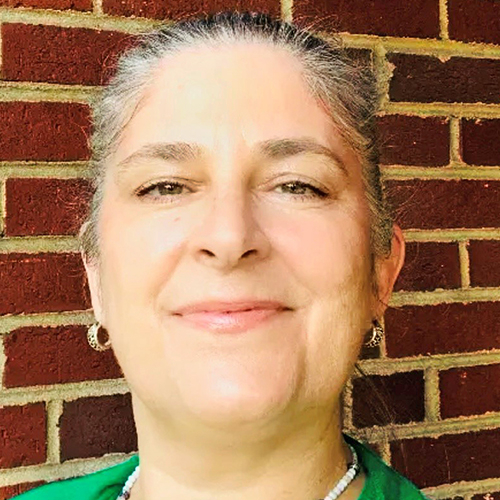GOLD Learning Tongue-Tie Online Symposium 2022 - Day 2 Advancing Our Understanding
Welcome to Day 2 Lecture Pack of the GOLD Learning Tongue-Tie Online Symposium 2022 for topics on Advancing Our Understanding! 5 expert speakers present a comprehensive overview of the fundamentals of providing care to infants and young children with oral restrictions and their families. Dive deeper into the topic of tongue-tie with a look at the impact of COVID-19 and the implications for tongue-tie division, the long term implications of tongue-tie, new research on oral restrictions and reflux, compensatory vs novel movements, and clinical case studies of situations where oral restrictions were initially missed, the consequences and results of subsequent treatment.
These presentations will leave you feeling more confident and armed with clinical skills that you can put into practice right away to help the families in your care.
Learn more about the Day 1 Lecture Pack of the Tongue-Tie Online Symposium 2022 - Fundamental Skills. Learn more about how to assess for tongue-tie using the Lingual Frenulum Assessment Protocol for Infants, the importance of anticipatory guidance and supportive aftercare, the impact of tethered oral tissues on the fascial system, retrognathia and hypotonia as differential diagnoses and the mental health implications and effective counselling and screening for mood disorders.
Closed Captions
Please note that English and Spanish Language Closed Captions are available for presentations. To enable Closed Captions for any of our recordings, please hover your cursor over the video player to find the "CC" button on the bottom right corner that gives you language options.


Dr Philip Hand practices in Melbourne, Australia . His certifications include: BDS (Otago N.Z.), FICCDE LA&HA Master in Laser Dentistry (Slovenia), MSc Laser Dentistry (UCSC – Rome). He is the Secretary of the International Academy of Innovative Dentistry (IAID) and Assistant Professor UCSC-Rome. Dr. Hand is interested and practices in all fields of general dentistry. These include Implant Dentistry, Endodontics, Periodontics and Orthodontics (POS Graduate). He is a devoted proponent of the use of the dental microscope and dental lasers. He is passionate about tackling the issues and treatment for infant feeding both breast and bottle, airway health and growth and sleep from a dental perspective. He works collaboratively with lactation consultants, maternal health nurses, paediatricians, paediatric osteopaths and chiropractors in the treatment of infants in this pursuit and is actively involved in teaching the importance of this treatment for our patients from infants to adults.
1: Explain the importance of tongue movement for feeding and facial growth and how to make an assessment of restrictive frena (restrctive tethered oral tissues).
2: Detail the results of new research in relation to improvement in infant reflux and mother's comfort after release of restrictive tethered oral tissues.
3: Describe the ideal team of professionals and their roles to achieve the best treatment outcomes for tongue-tied infants
This presentation will look at new research into lingual frenulum restriction and its surgical release to achieve improvement in problems with reflux, breastfeeding and pain for the breastfeeding mother. I will also expand this into restrictive tethered oral tissues (lip-tie, buccal-tie) as a whole, as this was part of my published study into the laser surgical release of restrictive tethered oral tissues on breastfeeding and Gastroesophageal Reflux Disease (GERD). Learn more about the impact of surgical release (frenotomy) of tongue- tie, lip-tie, buccal-tie on both reflux and breastfeeding outcomes for the classically recognised anterior tongue-tie and the less obvious (without functional assessment) posterior tongue-tie. Posterior tongue-tie was noted in 71% of the study cohort.


As a little girl, Melanie had the opportunity to watch her OBGYN dad deliver babies and it was such an incredible process to be a part of, she knew she wanted to help babies when she grew up. She received her bachelor’s degree in Family Science from Brigham Young University and worked in adoption until she had her first of six children, which included twins, all of which she was able to exclusively breastfeed. She struggled with postpartum depression which has helped her to be all the more compassionate towards the mothers she works with. Once all 6 children were in school, she became a certified postpartum doula and focused on guiding families mainly with multiples. Given her personal experience, she felt called to serve breastfeeding mothers, so she went back to school to become an IBCLC. She has a passion for helping breastfeeding dyads and also loves educating others about the importance of treating ties. She feels very blessed to have trained with some of the top in the tongue tie field and hopes to continue to spread the word to help increase breastfeeding success.
1. Explain the importance of considering additional aspects of why infants may be struggling beyond syndromes
2. Describe how low tone causing breastfeeding struggles in Down syndrome infants is not always from the syndrome, but can be from an untreated tongue tie
3. Explain why tongue tie release should be considered before G tube
4. Describe how to help infants that are diagnosed “Failure to Thrive”
Improve your investigation skills as we walk through case studies of infants with tongue ties that were initially missed and the subsequent consequences. We will then review once the ties were found how a frenectomy with complete release improved or completely resolved their symptoms. We will examine studies that involve infants with Down syndrome, G tube, NG tubes, and failure to thrive. Learners will be empowered to assess with more accuracy by relying on their knowledge of symptoms and function in addition to standard anatomical assessments. This will improve outcomes for breastfeeding dyads allowing more tongue-ties to be found earlier on.


Michelle has been a pediatric neurodevelopmental Occupational therapist specializing in precrawling infants for over 26 years. She has specialty certifications and training in lactation, manual therapy, and pre and peri natal psychology. Michelle has specialized in optimal cranial nerve function and oral restrictions, with an emphasis on infant movement, innate biological imperatives and human potential, providing novel curriculums, support and resources for both professionals and parents. She enjoys collaborating and working in teams for babies and families going through the tethered oral tissues release process.
Topic: Breastfeeding and Cranial Nerve Dysfunction – the what, who and why of Cranial Nerve Dysfunction in the newborn to precrawling baby - [View Abstract]
Topic: Compensatory vs Novel Movements: 3 Keys for Babies With Tongue, Lip and Buccal Restrictions - [View Abstract]
Topic: Interoception: Beyond the Homunculus....The Real Sixth Sense and Its Primary Function as Sensory Input to the Autonomic Nervous System - [View Abstract]
Topic: The Vagus Nerve: Branchial Motor / Special Visceral Efferents: The Pharynx, Larynx, Soft Palate and one tiny tongue muscle - [View Abstract]
Topic: TummyTime!™ : A Therapeutic Strategy for Parents and Babies - [View Abstract]
1. Learner will describe the top 3 compensatory strategies seen in precrawling babies with tethered oral tissues
2. Learner will describe 3 novel movements to elicit for optimal breastfeeding
3. Learner will list the 3 keys to eliciting novel movements and eliminating compensatory movement strategies for babies after release of tethered oral tissues
Babies with tongue, lip and buccal ties commonly present with altered or compensatory movements of the tongue, lips, face, mandible, neck and whole body. These compensations are secondary to restrictions and subsequent oral dysfunction that results from not having full range of motion and movement of the tongue, a vital organizational organ of the body. While these compensatory strategies have been somewhat functional prior to release, once the ties are released, babies need novel movements to emerge for function to improve and breastfeeding to experience a positive shift. The difficulty is that novel movements often do not spontaneously arise, requiring therapeutic intervention. In this talk, Michelle will discuss 3 keys to eliciting and strengthening novel and more competent oral patterns and feeding abilities after release while making compensatory strategies obsolete.


Sarah Hornsby is a registered dental hygienist, orofacial myofunctional therapist, speaker, mentor, and entrepreneur. She’s the founder and creator of MyoMentor, a comprehensive mentorship and online educational platform for myofunctional therapy with over 900 graduates as of August 2022. She’s passionate about merging technology into patient care and has been a pioneer in utilizing telehealth practices in the field of myofunctional therapy since 2014. Sarah is a provider advocate as much as she is an advocate for her patients. Her goal is to empower hygienists and dentists to elevate the standards of care by helping their patients through healthy breathing, airway dentistry, myofunctional therapy, and multi-disciplinary collaboration. She opened Faceology, her private myofunctional therapy practice, in 2010 and today it is a thriving telehealth speciality clinic with a focus on adult patient populations and complex treatment cases. Although Sarah has been a myofunctional therapist for over 10 years, it was actually her own health journey that led her down the path to help her patients.
1. Describe how tongue-ties impact sleep and breathing
2. Explain how tongue-ties impact our orofacial structures and craniofacial development
3. Describe how tongue-ties impact our soft tissue function
When it comes to addressing tongue-ties in medicine and dentistry, there is a large emphasis on treating infants in order to achieve optimal breastfeeding. But what happens to the babies who grow into children and adults without addressing their tethered oral tissues, and they end up as adults with tongue-ties? This presentation will discuss the challenges and symptoms that tongue-tied adults face later in life due to restricted lingual frenums. Knowledge of long-term implications is an important part of clinical teaching when explaining tongue-tie to caregivers or colleagues.


Sarah is a Registered General Nurse, Health Visitor, International Board Certified Lactation Consultant and Tongue-tie Practitioner with a busy private practice based in Cambridgeshire, UK. Sarah worked as a volunteer breastfeeding counsellor for the Association of Breastfeeding Mothers for several years and continues to run a weekly breastfeeding support group as a volunteer. Sarah is a founder member and former Chair of The Association of Tongue-tie Practitioners in the UK and is the author of the book, ‘Why Tongue-tie Matters’. She offers an online course in tongue-tie and infant feeding in association with Babyem and provides education on infant feeding and tongue-tie for healthcare professionals and breastfeeding supporters in the public, private and volunteer sectors.
Topic: Is This a Tongue-Tie: How Do We Decide? - [View Abstract]
Topic: The Elephant In The Room - Bleeding Post Tongue-Tie Division - [View Abstract]
1. Describe the challenges faced by parents of tongue-tied babies during the pandemic.
2. Explain how provision of care changed during the pandemic and what the long term implications of this have been.
3. Describe what the specific concerns were in relation to tongue-tie division which led to changes in provision during the pandemic.
This presentation will examine the impact Covid 19 had on infant feeding and in particular the provision of tongue-tie services in the UK and other parts of the world during the period March to September 2020. It will look at the impact changes in provision had on the infant feeding experiences of families. It will also explore how practitioners managed services during the pandemic and what the lasting effects on those services have been. Specific concerns around transmission of Covid 19 during oral procedures will also be considered. Consideration to lessons learned will be given.
Accreditation
CERPs - Continuing Education Recognition Points
Applicable to IBCLC Lactation Consultants, Certified Lactation Consultants (CLCs), CBEs, CLE, Doulas & Birth Educators. GOLD Conferences has been designated as a Long Term Provider of CERPs by the IBLCE--Approval #CLT114-07. This program is approved for 5 L-CERPs.
ASHA - Professional Development Hours for Speech-Language Pathologists
According to ASHA, this activity qualifies for 5 PDHs. Activities are accepted as PDHs if they contribute to your professional development and will lead to acquiring and enhancing skills and knowledge required for independent audiology and SLP practice.Please review ASHA's Acceptable Activities for Professional Development for more information.
Dietetic CPEUs - Continuing Professional Education Units:
Applicable to Dieticians & Nutritionists, this program is approved for 5 Dietetic CPEUs by the Commission on Dietetic Registration - the credentialing agency for the Academy of Nutrition and Dietetics.
If you have already participated in this program, you are not eligible to receive additional credits for viewing it again. Please send us an email to [email protected] if you have any questions.
Tags / Categories
(IBCLC) Clinical Skills, (IBCLC) Education and Communication, (IBCLC) Infant, (IBCLC) Pathology, (IBCLC) Research, Tongue-tie, Lip Tie & Structure
How much time do I have to view the presentations?
- The viewing time will be specified for each product. When you purchase multiple items in your cart, the viewing time becomes CUMULATIVE. Ex. Lecture 1= 2 weeks and Lecture Pack 2 = 4 Weeks, you will have a total of 6 weeks viewing time for ALL the presentations made in that purchase.
- Time for viewing the talks begins once you purchase the product. For Live Webinars & Symposiums, the viewing period begins from when the live event takes place. Presentations can be accessed 24/7 and can be viewed as many times as you like during the viewing period.
What are bundled lectures?
- Presentations may be available individually or via a bundled package. Bundled lectures are a set of lectures that have been put together based on a specific category or topic. Some lectures will be available in both individual and lecture form, whereas others will be available only via a bundled lecture pack.
Will there be Handouts?
- YES! Each lecture comes with a PDF handout provided by the Speaker.
Some lectures include a Q&A, what does that mean?
- During our online conferences, presentations that occur live are also followed by a short 15 minute Question & Answer Session. The Speaker addresses questions that were posted by Delegates during the presentation. We include the recording of these Q&A Sessions as a bonus for you.
How can I receive a Certificate?
- If this presentation offers a certificate, once you are done viewing the lecture or the lectures within a bundle, submit your attendance record in order to be able to download your certificate. You'll be able to see which credits are offered for the lecture by hovering over the "Credits Available" link within the "Speakers & Topics" tab.
Professionals that selected this package also viewed

|
|

|









